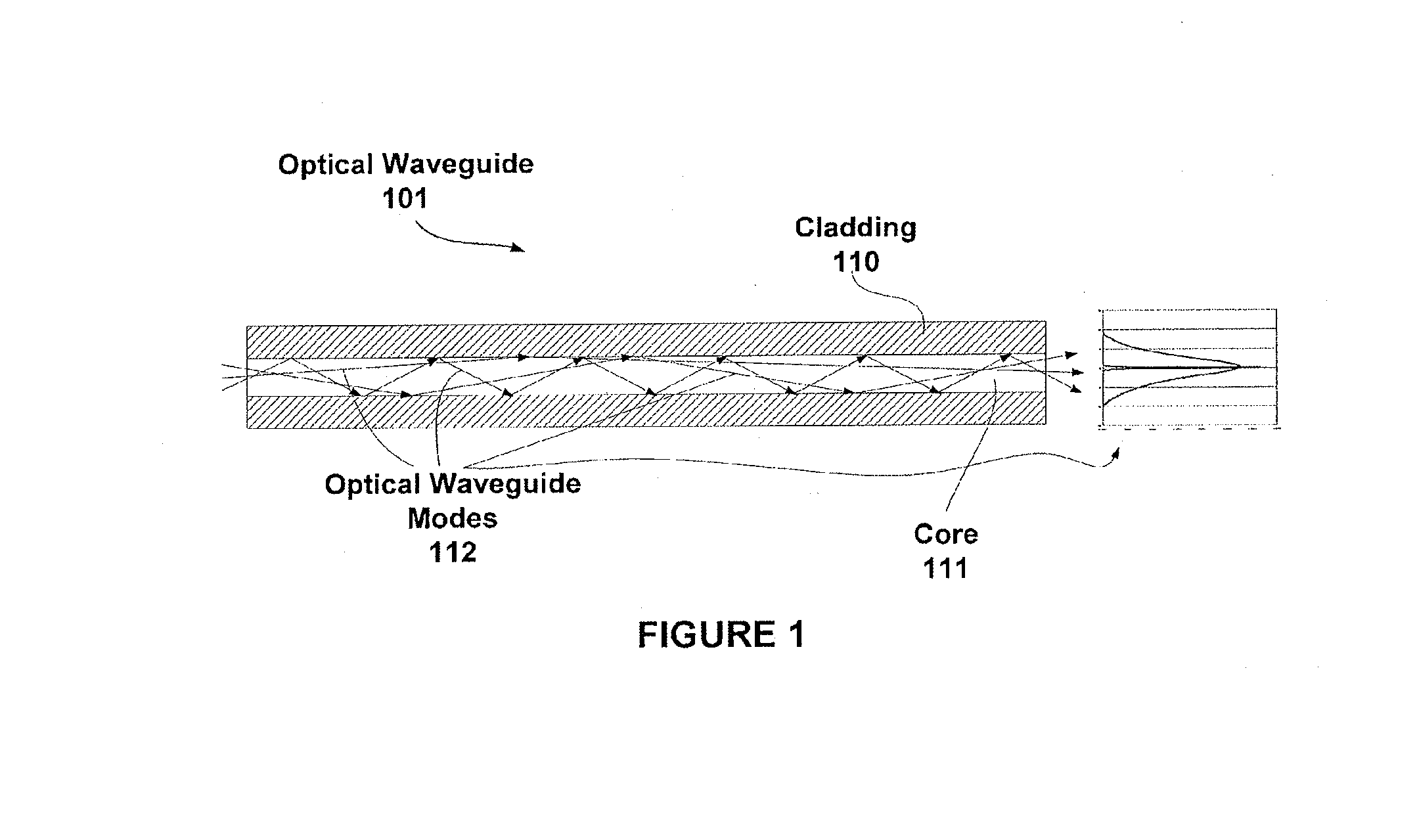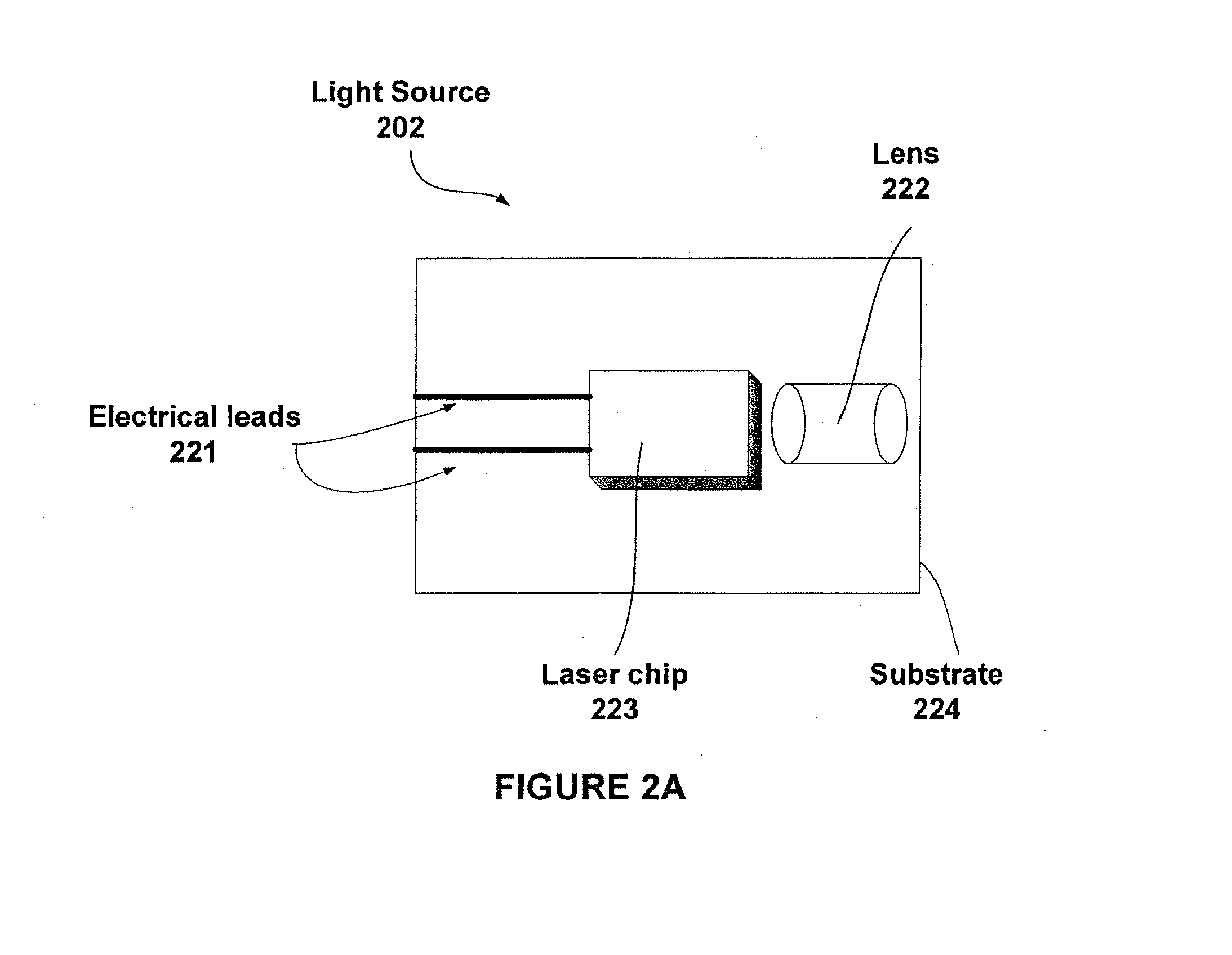Waveguide-based detection system with scanning light source
a detection system and waveguide technology, applied in the field of waveguide-based detection systems with scanning light sources, can solve the problems of limited signal strength, short interaction length between bio-samples, high background or noise, etc., and achieve the effect of simple and cost-effectiv
- Summary
- Abstract
- Description
- Claims
- Application Information
AI Technical Summary
Benefits of technology
Problems solved by technology
Method used
Image
Examples
example 1
Establishing the Limit of Detection
[0373]One feature of the sensors of the current invention is the ability to detect low numbers of biologically active analyte molecules. The following experiments demonstrate this capability. The limit of detection (LOD) of the sensors was determined by measuring fluorescently labeled ovalbumin in solution. The dye used was Alexa Fluor 660; it was excited at 658 nm and emission was measured at 690 nm. All measurements were made at room temperature (25° C.). LOD was assayed using two different methods: 1) determination of the lowest concentration of labeled ovalbumin detectable above buffer background with better than 95% confidence (P<0.05, Student's t-test); and 2) determination of the analytical sensitivity from a standard curve of sensor response vs. concentration (MDL=2*SD / slope, where SD is the standard deviation of the buffer background measurement and slope is the initial slope of the standard curve). These methods are comparable in that bot...
example 2
Detection of Protein-Protein Interactions
[0375]The present invention is useful for measuring protein-protein interactions. In this example, the waveguide-based optical detection technology was used to measure the binding of ovalbumin to anti-ovalbumin antibodies. Before the experiment was conducted, chips with 52.5×4,500 μm sensing elements were dip-coated with anti-ovalbumin antibodies. This procedure involved several steps. First, the chips were cleaned. A chip fabricator coated the active surface of the chips with a thin polymer layer to protect it during wafer dicing. The polymer layer was removed by immersing chips in acetone for 5 minutes, followed by isopropanol for 5 minutes and a second isopropanol rinse for an additional minute. Chips were then washed in deionized water three times and dried in a vacuum desiccator. Next, the surface was activated. To immobilize capture molecules to the waveguides, a thin layer (˜10 nm) of silicon dioxide was created on the chips by Piranha...
example 3
Detection of Polymerization of Nucleic Acids
[0380]The waveguide-based optical detection system can be used to quantify the polymerization of DNA in a primer extension assay. In a primer extension reaction, an mRNA target hybridizes to a DNA primer, and reverse transcriptase uses the mRNA target as a template to add deoxynucleotides (dATP, dTTP, dGTP, dCTP) to the 3′ end of the DNA primer.
[0381]High sensitivity using a waveguide-based optical detection system requires that the hybridization in the primer extension reaction occur at concentrations in the low femtomolar range. Thus, it was first established that hybridization occurs at low concentrations on the surface of the chip. For this experiment, a capture oligonucleotide primer was immobilized to the chip, and a complementary synthetic DNA labeled at the 5′ end with Cy5.5 was incubated with the primer. For experimental rigor, the sequences of both the captured oligonucleotide and a complementary synthetic DNA were verified by ma...
PUM
| Property | Measurement | Unit |
|---|---|---|
| width | aaaaa | aaaaa |
| width | aaaaa | aaaaa |
| frequency | aaaaa | aaaaa |
Abstract
Description
Claims
Application Information
 Login to View More
Login to View More - R&D
- Intellectual Property
- Life Sciences
- Materials
- Tech Scout
- Unparalleled Data Quality
- Higher Quality Content
- 60% Fewer Hallucinations
Browse by: Latest US Patents, China's latest patents, Technical Efficacy Thesaurus, Application Domain, Technology Topic, Popular Technical Reports.
© 2025 PatSnap. All rights reserved.Legal|Privacy policy|Modern Slavery Act Transparency Statement|Sitemap|About US| Contact US: help@patsnap.com



